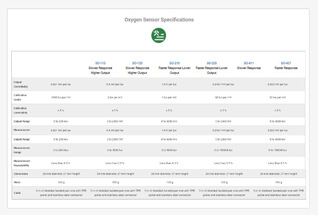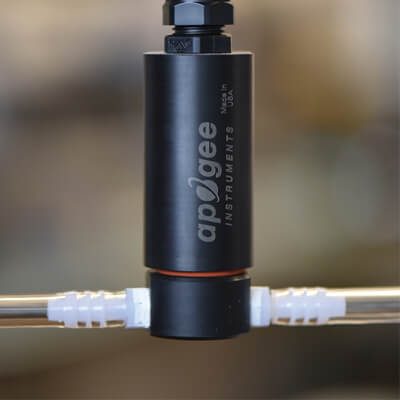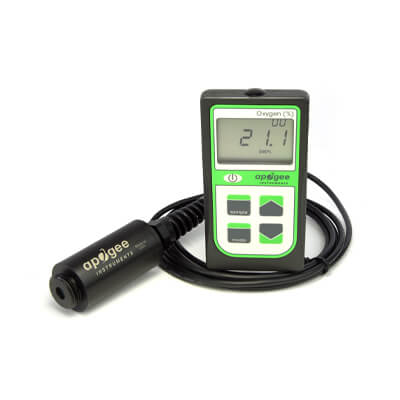Heated Detector
The protective membrane in front of the oxygen sensor can be heated to prevent water from condensing on the membrane and blocking the diffusion path. The heater is typically used when sensors are deployed in soil or compost where relative humidity is close to 100 %.
Rugged Housing
Housed in a polypropylene body and electronics are fully potted, ideal for long-term deployment in porous media, including acidic environments (mine tailings). Two head options are available: a diffusion head that creates a small air pocket for measurement in porous media and a flow-through head with two adapters for tubing that allows measurement of gas flowing in lines.
Simple Calibration
Voltage output is linearly proportional to absolute amount of oxygen. Calibration is accomplished by measuring the voltage under ambient conditions (atmosphere is 20.95 % O2 and deriving a linear calibration factor (slope). A zero offset can be measured with N2 gas (recommended for measurements below 10 % O2).
Typical Application
Applications include: measurement of O2 in laboratory experiments, monitoring gaseous O2 in indoor environments for climate control, monitoring of O2 levels in compost piles and mine tailings, monitoring redox potential in soils, and determination of respiration rates through measurement of O2 consumption in sealed chambers or measurement of O2 gradients in soil/porous media.
Internal Temperature Sensor
All oxygen sensors have an internal temperature sensor (thermistor or type-K thermocouple) that allows for temperature monitoring and correction of signal for temperature effects.
Output Options
Analog version is an un-amplified voltage output. Oxygen sensors are also available to a hand-held meter with digital readout.
Warranty and Support
All Apogee products are backed by an industry-leading four year warranty and outstanding customer support.



